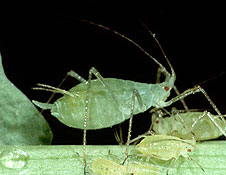Ever wonder about habitat isolation? Well, wonder no more!
habitat – ecological distinct area where a species “cruises”
niche – an organism’s way of life
sympatric – living together in the same habitat
allopatric – living in different habitats
There are three main methods of habitat isolation:
Microspatial habitat Isolation – members of two species occupy the same general area but their reproductive encounters are reduced, due to adaptions or preferences for ecologically different sections of the area.
Examples:
–Two species of drongo birds Dicurus ludwigii and Dicurus admilis. D. ludwigii never ventures outside the edge of the evergreen forest, while D. admilis is always in dense forest areas. The two may be 50 yards apart but will rarely interact. (Mayer 1947)
–6 species of the goldenrod Solidago are distributed along a moisture gradient on a prairie slope, thus are microspatially isolated from each other in the microhabitats created by the levels of moisture. (Werner and Platt 1976)
–the alfalfa and clover races of the pea aphid Acyrthosiphon pisum cannot effectively feed on each other’s plants, which limits their possiblity of interbreeding.
More on the pea aphid Acyrthosiphon pisum – it is a cyclical parthenogen. Parthenogenesis is when a sexual creature reproduces without mating events. The pea aphid will have10-12 asexual generations before reproducing asexually. They are host specific insects, living and breeding on the plants they eat. Acyrthosiphon pisum pisum has three races, including the clover and alfalfa races mentioned earlier. The only way to distinguish the two is their host plants. Hybrids are rare and show reduced fitness (Via et al 2000). This looks to be an example of sympatric speciation, but before we can jump to that conclusion we must look at the genetics. The races differ by five genes that affect acceptance of host and performance on host. As individuals with the “proper” alleles performed better on their host plants, and the aphids sorted themselves accordingly, this is evidence of sympatric speciation.

Macrospatial Habitat Isolation – The two taxa cannot interbreed because their habitat is allopatric (different or seperated).
Examples:
–Parasites on their hosts are very often host specific.
—Ophraella chrysomelid beetles are host specific, as larvae and adults feed on one or a few plant species, and cannot survive on the others. The fact that their host plants do not occur in the same habitat distinguishes them from the sympatric aphid races.
BOTH Macrospatial and Microspatial Habitat Isolation – this is mainly microhabitats that overlap in a parchwork fashion.
Examples:
–Crickets Gryllus pennsylvanicus and Gryllus firmus both inhabit the Eastern US, where they are allopatric. They seperate in that G. pennsylvanicus prefers loamy soils and G. firmus prefers sandy soils. At times they exist in close proximity, but still remain confined to the prefered soil type.
–Oaks Quercus gambelii and Quercus grisea follow the same pattern.
Habitat isolation is an important barrier to gene flow, and can occur even with slight variations in habitat but create situations where sympatry becomes allopatry. These barriers can be very strong, such in cases of geographic barriers. Once barriers are in place, this gives chance for more isolating barriers to arise and further differentiate the two populations.
These examples only deal with habitat isolation, they do not involve other methods of isolation.

